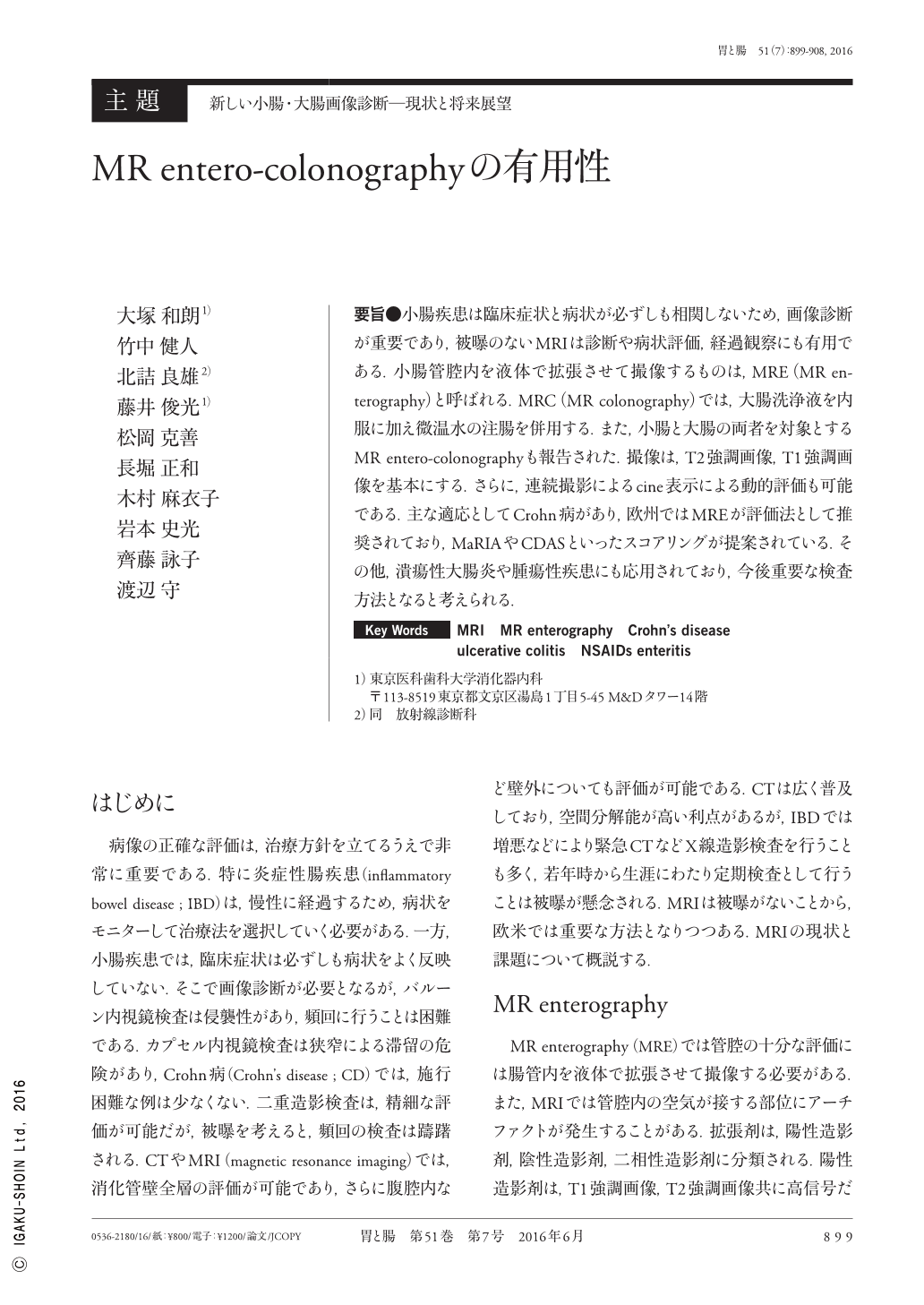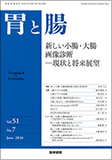Japanese
English
- 有料閲覧
- Abstract 文献概要
- 1ページ目 Look Inside
- 参考文献 Reference
要旨●小腸疾患は臨床症状と病状が必ずしも相関しないため,画像診断が重要であり,被曝のないMRIは診断や病状評価,経過観察にも有用である.小腸管腔内を液体で拡張させて撮像するものは,MRE(MR enterography)と呼ばれる.MRC(MR colonography)では,大腸洗浄液を内服に加え微温水の注腸を併用する.また,小腸と大腸の両者を対象とするMR entero-colonographyも報告された.撮像は,T2強調画像,T1強調画像を基本にする.さらに,連続撮影によるcine表示による動的評価も可能である.主な適応としてCrohn病があり,欧州ではMREが評価法として推奨されており,MaRIAやCDASといったスコアリングが提案されている.その他,潰瘍性大腸炎や腫瘍性疾患にも応用されており,今後重要な検査方法となると考えられる.
Clinical symptoms do not always reflect the true severity of small intestinal lesions;therefore, cross-sectional imaging is important for assessing these diseases. MRI(magnetic resonance imaging)is a cross-sectional imaging modality that involves non-ionizing radiation for the diagnosis, assessment, and follow-up of several diseases. MRI with oral contrast to obtain luminal distention is called MRE(MR enterography). Furthermore, a modified technique called as MR enterocolonography is used for the simultaneous evaluation of small and large intestinal lesions. MRC(MR colonography)requires both oral administration and enema. Acquisition of imaging for MRE involves T2 and T1 enhancement, and cine-imaging is also available. MRE is the recommended modality for the assessment of Crohn's disease in Europe, and several indexes, such as MaRIA(magnetic resonance index of activity)and CDAS(Crohn's disease activity score), have been proposed. MRI is additionally used to assess ulcerative colitis and diagnose neoplasm. Thus, MRI is an essential modality for the diagnosis and follow-up of several diseases affecting the small intestine.

Copyright © 2016, Igaku-Shoin Ltd. All rights reserved.


